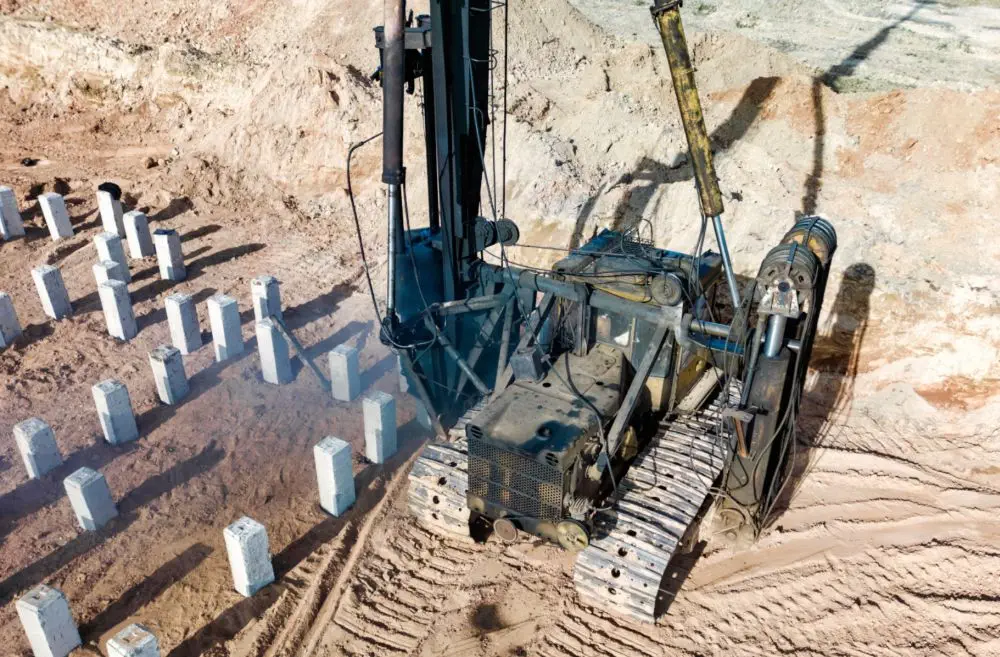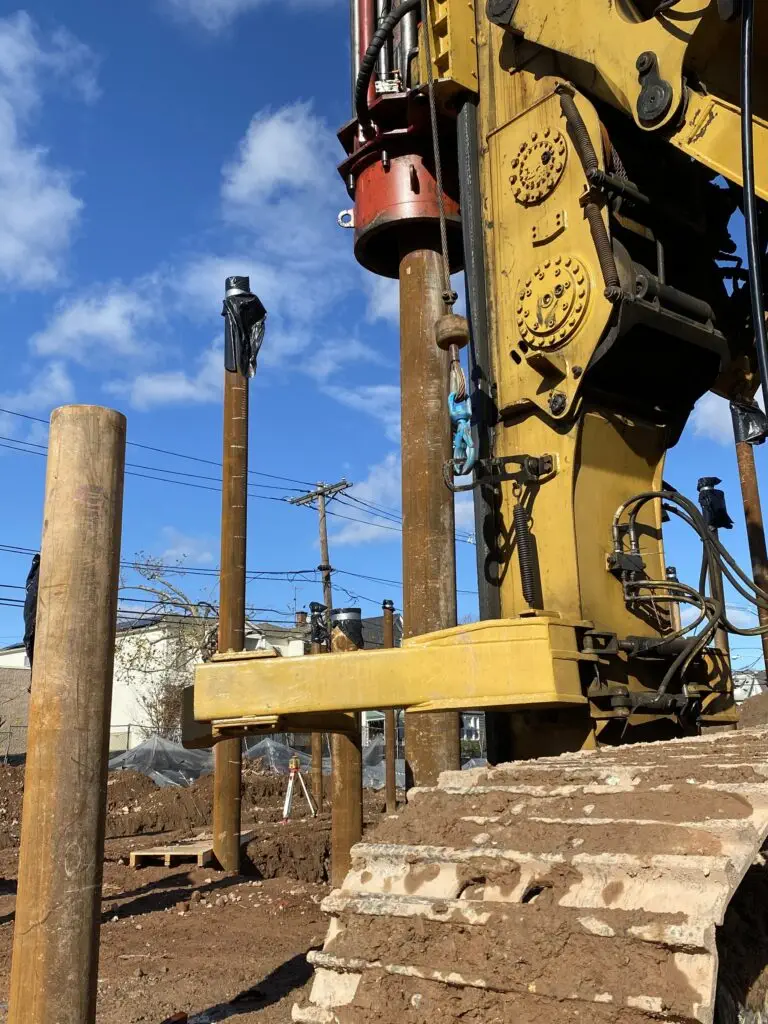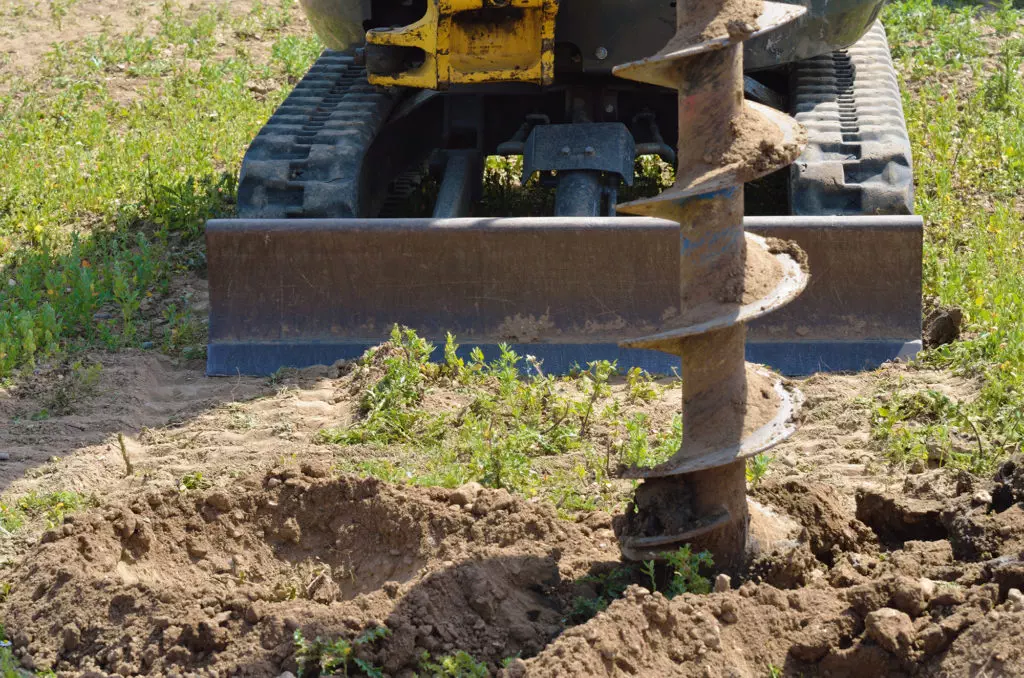The construction projects require a stable and strength-oriented foundation of the structure that stays intact in the long run. The weight of the buildings is evenly distributed in the foundation and it ensures safety and stability. There are different ways using which the foundation of the construction structures are created among which piles play a crucial role.
There are different types of piles among which two of the types are driven piles and auger piles. If you want to know what is a driven pile vs auger pile, the guide below features detailed information. So, let’s read.

What Are Auger Piles?
Auger piles are also called continuous flight; these are installed in the ground creating a deep foundation consisting of a continuous auger. The process of installing these piles starts with screwing them in the soil to the desired depth. Once the required depth is achieved the pile grout and concrete are pumped with the help of a hollow stem auger and it is then withdrawn.
It ensures that the solid pile is created, after this a steel reinforcing cage is inserted in the concrete which is just poured so that the structural capacity of the pile increases. These piles are suitable for granular and cohesive soils as it is suitable for varying conditions of ground.
Advantages of Auger Piles
The auger piles have multiple benefits which make them suitable when it comes to installing them and some of these are as follows:
- The installation method of these piles produces minimal vibrations and less noise. Hence, such projects that are undertaken near hospitals, residential spaces, and other noise-sensitive areas may find them suitable with minimal disturbance.
- These piles adapt to a wide range of soil types. It may be composed of granular soils, soft clays, and silts, the process is even suitable for such areas where the bearing capacity near the surface is limited.
- The use of grout and continuous drilling helps with immediate installation which saves time and proves to be cost-effective compared to other methods.
- There is no displacement of soil during the process of installing these piles because the material is removed and the risk of ground heave is minimized.
Applications of Auger Piles
These piles are used in many applications and some of these are as follows.
- They are used in structures that have a medium to high load comprising commercial and residential buildings.
- Solar farms use these piles due to their flexibility with the varied conditions of soil they help support solar panel structures.

What Are Driven Piles?
Driven piles are existing structures that are made using steel piles or concrete. The pile drivers help drive them in the ground. They consist of heavy machinery that uses static and impact force to push the pile into the ground till the desired depth is reached. It helps to achieve stability by displacing the soil on the ground and creates a base that helps in transferring lateral loads.
Advantages of Driven Piles
The advantages of driven piles are as follows:
- They need no time for curing and they are ready to handle loads the moment they are installed, which speeds up the process of construction.
- These piles are suitable for use over a wide range of soil positions and the displacement of soil makes the load bearing capacity increased.
- These piles are equipped with consistent quality and offer resistance in conditions that are harsh and exposed to water and corrosion.
- The installation process is quicker and it doesn’t need any type of evacuation.
Applications of Driven Piles
These piles are mostly opted to create the foundation of the bridges to make them stable in soft soils.
High-rise buildings are supported by them as they can handle high loads.
The marine structures like piers and docks are also based on these piles.

Key Differences Between Auger Piles and Driven Piles
When it comes to choosing piles, understanding their differences is important. The section below highlights in detail a comparison between the two piles.
Installation Process
The pile installation of these two types differs a lot. Auger piles are installed through continuous flight auger which is drilled into the ground. It removes the soil and creates a space in which grout is pumped. It minimizes soil disturbance and is suitable for urban construction. Driven piles are ready to install piles and are fixed in the ground by hammering. To screw piles, the soil is displaced making a stable foundation.
Auger piles are installed with drilling rigs or concrete pumps and driven piles are installed with heavy pile drivers.
Load Capacity and Performance
Load bearing capacity of these piles is dependent on the condition of the soil and construction project requirements. Auger piles are suitable for areas that have cohesive soil and need to resist lateral loads. The capacity is based on the type of soil, depth, and diameter of the pile and hence they are suitable for soft soils.
Driven piles are suitable for granular soils, at the time of installation the compaction is caused to enhance the load-bearing capacity. They are suitable for applications that need to hold heavy loads like tall buildings and bridges.
Environmental Considerations
The environmental impact between the two piles auger and drive also differ. Auger piles produce less noise and less vibrations and hence do not cause disturbance in the surroundings. However, they generate soil that needs proper disposal.
Driven piles are noisier and produce a lot of vibrations disturbing the nearby surroundings. However, they displace the soil which results in less waste.
Cost Considerations
The condition of the site and the scale of the project determine the cost. Auger piles have a high cost of installation and also need special equipment followed by grout and concrete mixing. But they install quickly and hence the labor costs are reduced. Moreover, they are suitable in the longer run requiring less maintenance.
Driven ones on the other hand have a low cost of installation as they are standard-produced piles and they also are installed quickly in dense soil, however in soft soil, they are hard to install. It leads to increased cost and time for installation. They are durable and also need less maintenance in harsh surroundings.

Auger Cast Piles vs. Drilled Piers
Auger cast piles are meant for a certain auger installed foundation which is known as continuous flight auger piles. These holes are drilled in the ground using a hollow stem using which the grout is pumped or the concrete is added and the auger is withdrawn.
Augercast piles are designed to handle large loads which can be reinforced quickly once the grouting is added with steel cages. The process removes the requirement for having a casing ensuring continuous support which makes them suitable for varied soil conditions.
Comparison with Drilled Piers
Auger cast piles and drilled piers differ in terms of applications, performance, and installation. Installing auger cast piles requires a hollow stemmed auger that pumps the grout or concrete when withdrawn. They minimize the disturbance of the base and suppress the material in its surroundings at the time of installation. They are meant for medium-load applications.
Drilled piers also known as drilled shafts help in excavating the larger diameter hole which has a drilling fluid and a reinforcement placement. The process helps to handle a high load and hence it is suitable for high-load construction like bridges and skyscrapers requiring deep foundations.

Conclusion
The guide above must have helped you understand the driven and auger. However, it is suggested that analyzing the surroundings, the requirement of strength, and the soil conditions analysis is important in choosing them. However, make sure to test piles before choosing them so that you end up laying a strong foundation and verify the capacity of the load.
If you are confused about which piles to choose between auger and driven you can get in touch with us and we will provide you with expert advice for your construction project. Our pile drivers are meant to handle varied projects like solar, guardrail, and vineyard projects. So, get in touch with us today!
FAQs
What is the main difference between auger piles and driven piles?
Auger piles are installed in the ground by drilling and driven piles by hammering, it impacts the level of noise and suitability for the types of soil.
What are auger cast piles?
Auger cast piles consist of drilling a hole and then filling concrete, it is reinforced with steel which creates a strong base.
What does augered mean?
The term augered means to drill in the ground using an auger, a tool that creates holes for piling.
How do auger cast piles differ from drilled piers?
Auger cast piles are installed by having the auger filled with grout or concrete. The drilled piers comprise of drilling holes and then adding concrete.
When should I choose driven piles over auger piles?
Driven piles are suitable for applications where immediate load capacity is needed or soil is hard and dense.
How Can Ever Star Machinery help you with your Projects?
Your upcoming construction projects might be requiring spiral piles, pile drivers and other related pile accessories and to source them conveniently, you can contact Ever Star Machinery. We also offer spiral nails to help you attain strong structures. So, wait no more and get in touch with us.
